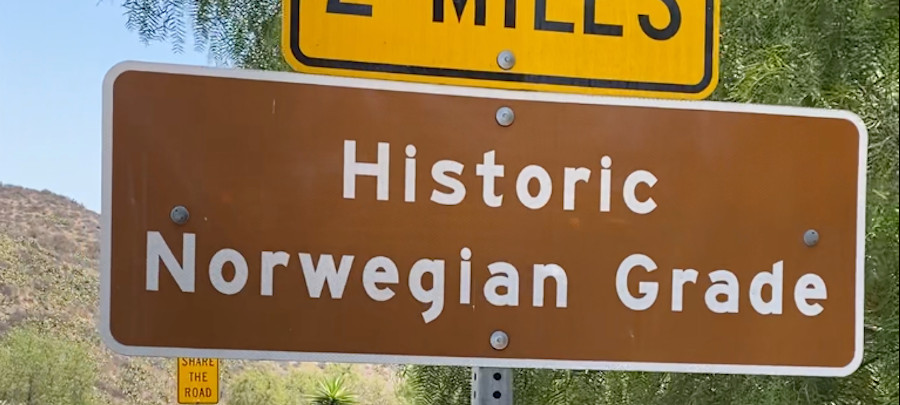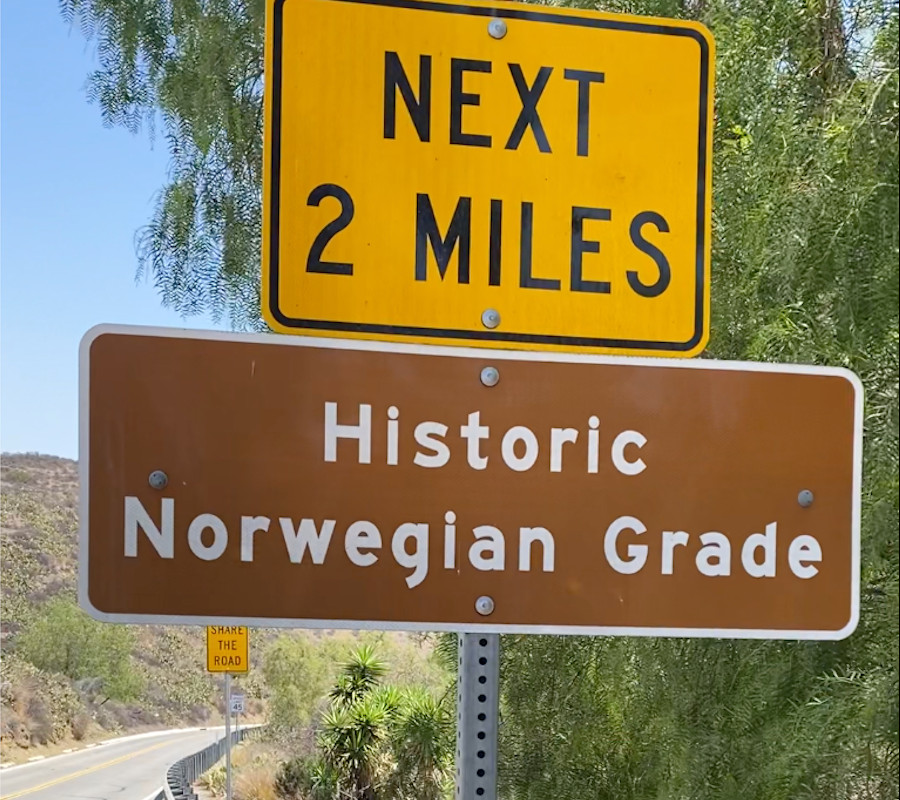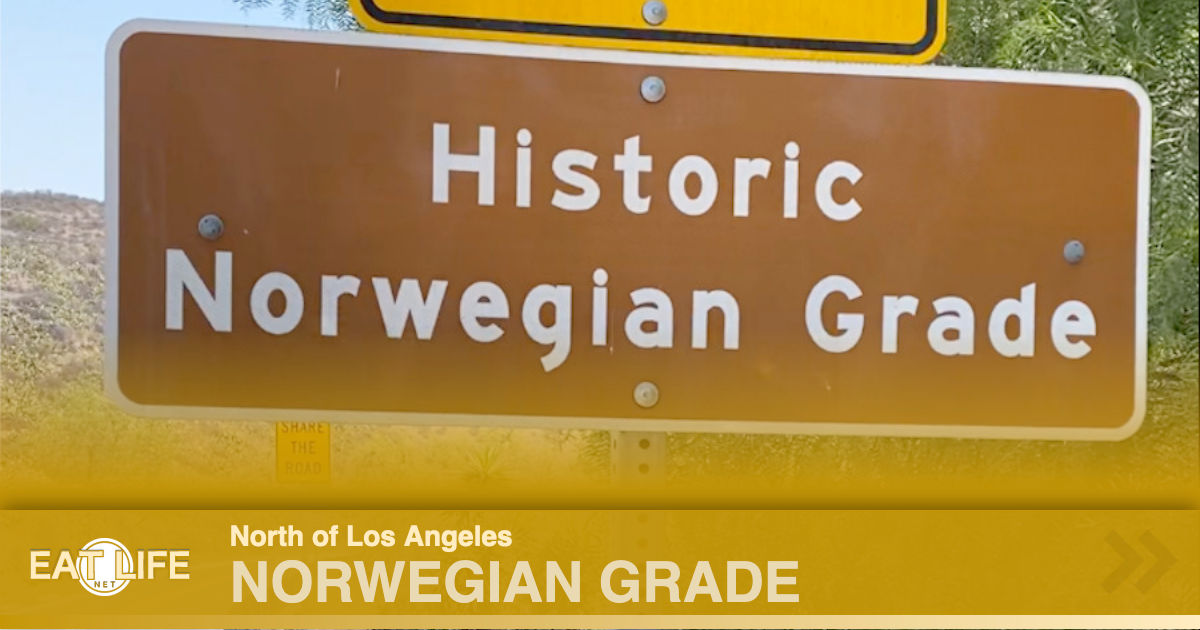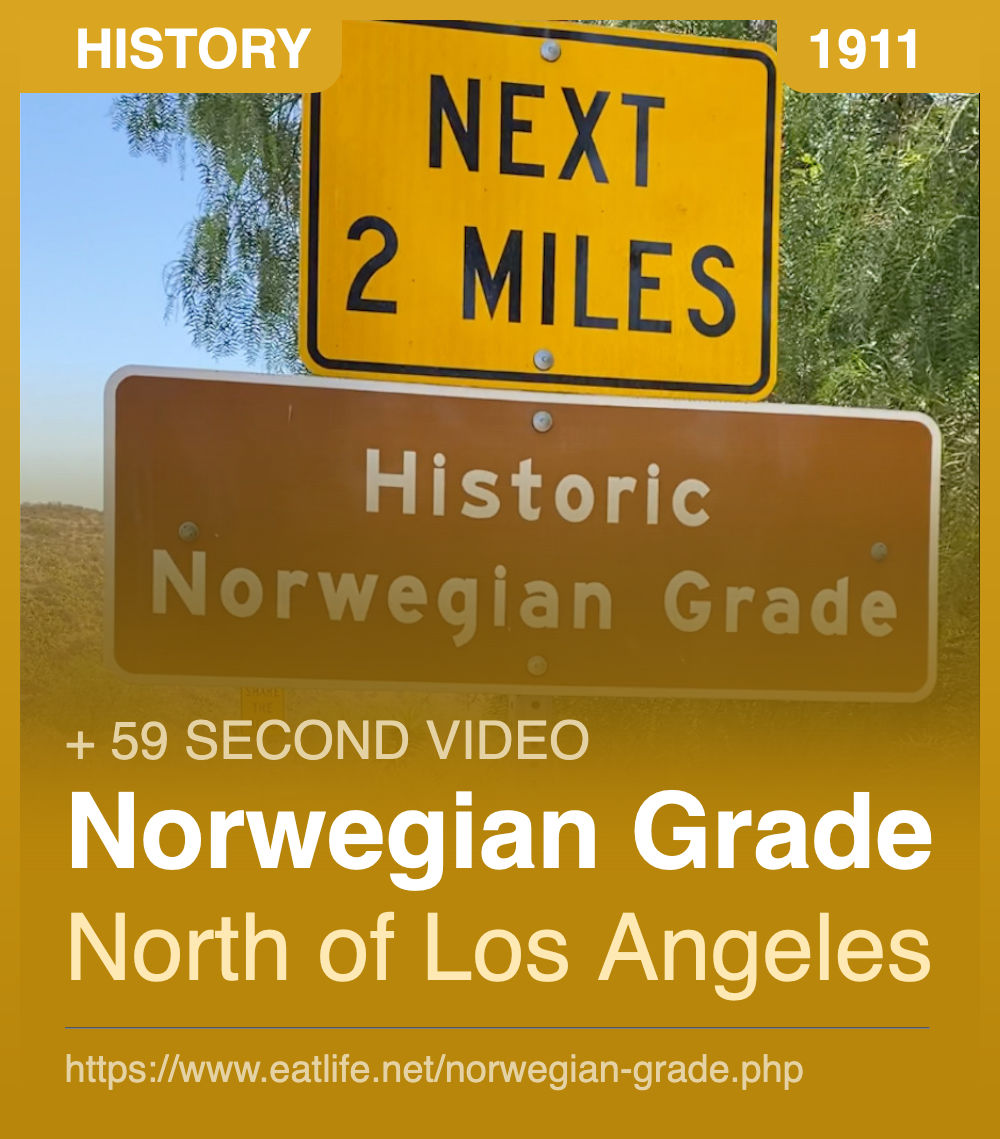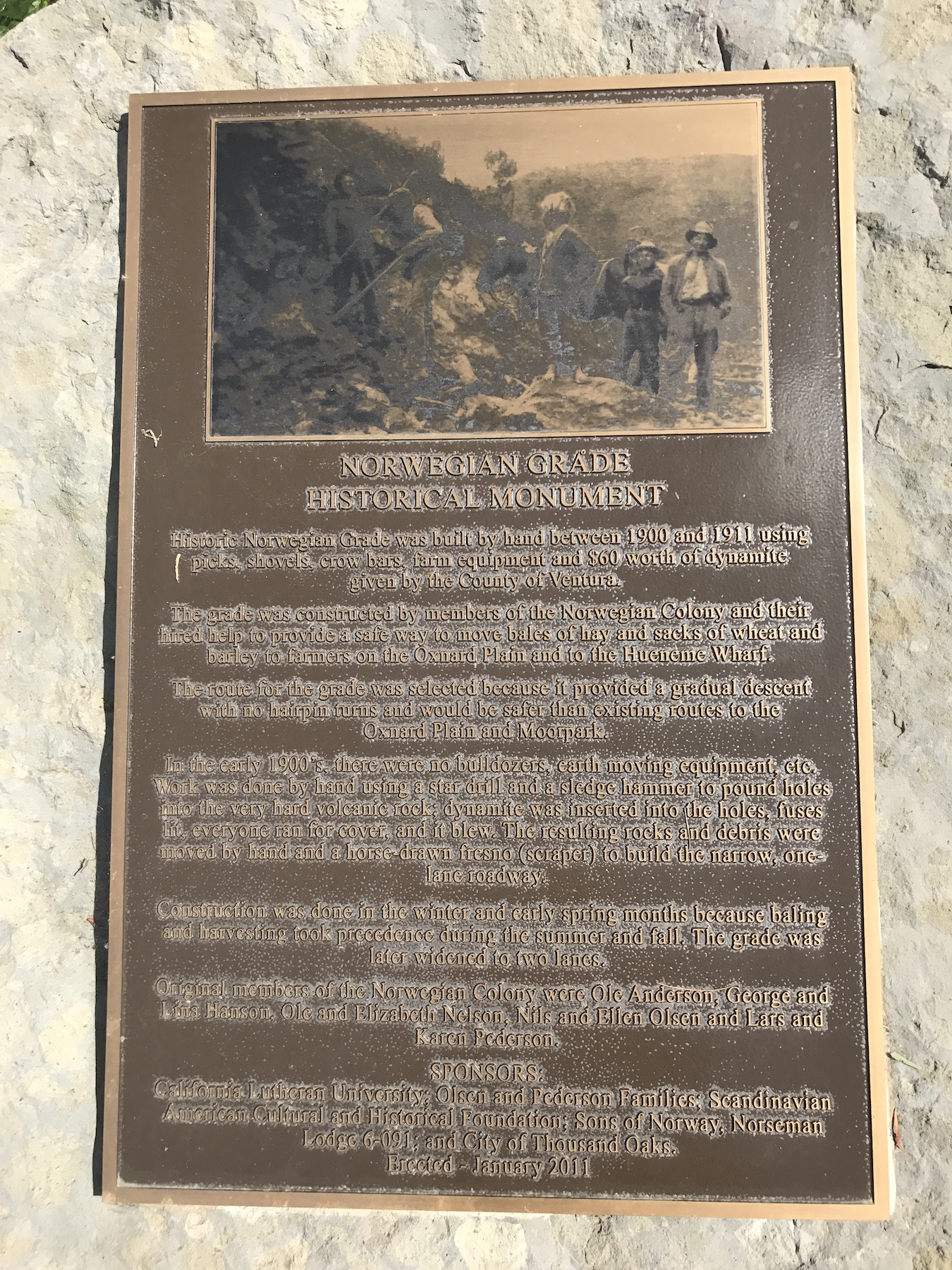
The grade was constructed by members of the Norwegian Colony and their hired help to provide a safe way to move bales of hay and sacks of wheat and barley to farmers on the Oxnard Plain and to the Hueneme Wharf.
The route for the grade was selected because it provided a gradual descent with no hairpin turns and would be safer than existing routes to the Oxnard Plain and Moorpark.
In the early 1900's there were no bulldozers, earth moving equipment, etc. Work was done by hand using a star drill and a sledge hammer to pound holes into the very hard volcanic rock; dynamite was inserted into the holes, fuses lit, everyone ran for cover, and it blew. The resulting rocks and debris were moved by hand and a horse-drawn fresno (scraper) to build the narrow, one-lane roadway.
Construction was done in the winter and early spring months because baling and harvesting took precedence during the summer and fall. The grade was later widened to two lanes.
Original members of the Norwegian Colony were Ole Anderson, George and Lina Hanson, Ole and Elizabeth Nelson, Nils and Ellen Olsen, and Lars and Karen Pederson.
SPONSORS: California Lutheran University; Olsen and Pederson Families; Scandinavian American Cultural and Historical Foundation; Sons of Norway, Norseman Lodge 6-091; and City of Thousand Oaks. January 2011
The Norwegian Grade is a 2 miles section of Moorpark Road from the Santa Rosa Valley up into the Simi Hills and the city of Thousand Oaks, within Ventura County, California.Norwegian Grade:
- Completed in 1911.
- Until the construction of California State Route 23 Freeway, this was the most direct route between Moorpark and Thousand Oaks.
After several mishaps while hauling crops down the Potrero- and Conejo Grades, men of the Norwegian Colony decided to construct a new route.
- Nils Olsen donated the land in 1911, land which lies immediately west of present-day California Lutheran University.
- Over a two-year period, the extension of Moorpark Road was completed.
- The road was carved out of a steep canyon hillside by members of the Norwegian Colony in Thousand Oaks, and their hired help, between 1900 and 1911.
- Nils Olsen, George Hanson, Ole Nelson, Lars Pederson, and Ole Anderson purchased 650 acres in 1890 along the northern boundary of Rancho El Conejo. These settlers, known as the Norwegian Colony, needed a safe way to move bales of hay and sacks of wheat and barley to the Oxnard Plain and the Hueneme Wharf.
The new route down the grade would allow a gradual descent with no hairpin turns down into the Santa Rosa Valley and would be safer than existing routes to the Oxnard Plain and Moorpark.Construction Methods:
In the early 1900s, there were no bulldozers, earth moving equipment, etc. Work was done by hand using a star drill and a sledge hammer to pound holes into the very hard volcanic rock; dynamite was inserted into the holes, fuses lit, everyone ran for cover, and it blew. For construction, they used picks, shovels, crowbars, farm equipment, and $60 worth of dynamite given by Ventura County. The resulting rocks and debris were moved by hand and a horse-drawn fresno scraper to build the narrow, one-lane roadway.Construction was done in the winter and early spring months because baling and harvesting took precedence during the summer and fall. The grade was later widened to two lanes.
At its 100th anniversary, the grade was carrying over 6,000 cars each day.
